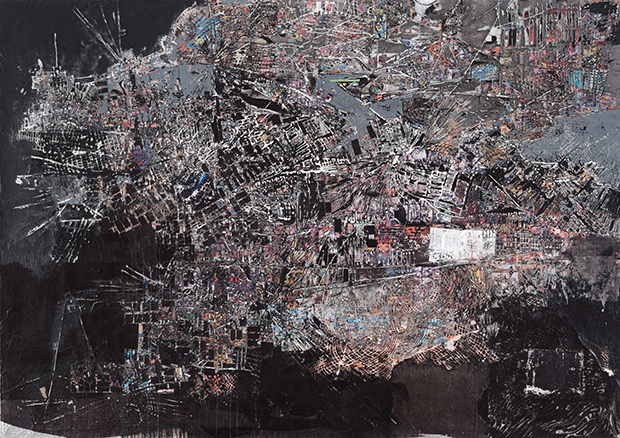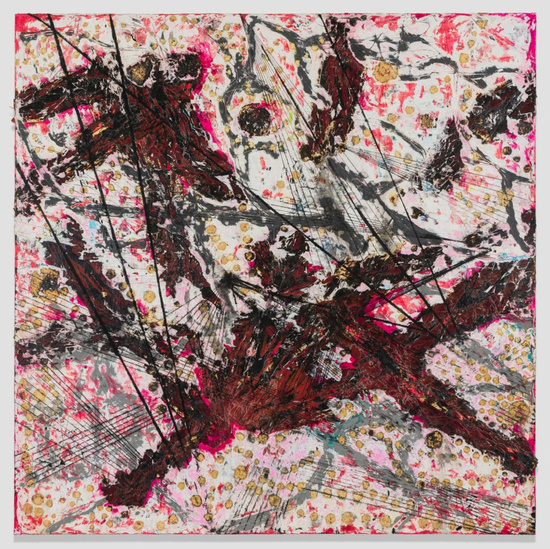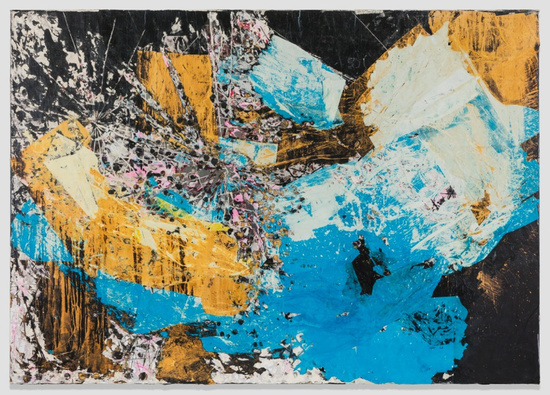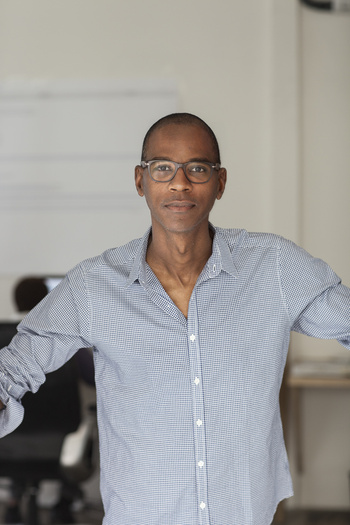
Get to know the US artist for the 2017 Biennale
Find out why Mark Bradford's abstract works are rooted in the real world, via our contemporary art title Vitamin P2
In an interview conducted to coincide with his appointment as the United States’ representative at the 2017 Venice Biennale, the Californian artist Mark Bradford told the New York Times that his Venice presentation would touch on "the political and social context" in which he, an African-American artist, has always worked.
Yet how can an abstract painter address these issues? Perhaps, for Bradford, the answer lies in a rejection of the question. His works aren’t really abstract, and they aren’t really paintings.

“Mark Bradford’s large-scale pictures – it is hard to speak of ‘paintings’ when so little paint is actually involved in the process – are devouring machines: they eat up all sorts of paper that the artist finds on the streets and glues to his works,” explains Adriano Pedrosa artistic director of Museu de Arte de São Paulo in our soon-to-be-reissued contemporary painting overview, Vitamin P2.
“Although seemingly abstract, to the careful viewer these works will reveal their true subject: the city and its streets. More specifically, they represent the neighbourhood where Bradford grew up and still lives, where his home and studio are located – the predominantly black and Latino neighbourhood of Leimert Park in South Los Angeles.
"In this sense, the work’s primary material is literally uprooted from its highly charged context and becomes deeply contaminated by it: paper advertisements and billboard posters found on the streets are recycled into fine-art material. Sections of amassed newspapers may advertise legal services for divorce or debt, cosmetic improvements of different sorts or programmes for achieving sobriety. Bradford describes this hitherto unnamed material, usually cheap, disposable and often printed simply in one or two bright colours, as ‘merchant posters’, referring to the promotional material of self-or-family-run businesses. In increasingly technological times, where printed paper is being replaced by digital media both indoors and out, the artist becomes a ‘paper chaser’."

In this sense, Bradford's abstract pictures are deeply engaged with the real world, and yet they can still be read in a number of different ways.
“The resulting pictures are deceptively abstract,” Pedrosa says. “They are intricate and layered compositions, paper patchworks that conceptually weave a variety of urban threads. One might perceive nets, grids and maps, yet it is difficult to draw, let alone close, a final circle. As such, they remain open to interpretation, up for grabs to viewers, critics and collectors alike. Fully abstract they cannot be, since there is nothing autonomous, sublime, otherworldly or detached from real life about these pictures. Bradford’s surfaces are loaded with the detritus of everyday life, an endless superposition of scraps of paper that carry their own meaning and history. And if the original sources seem to be rendered abstract, their DNA is never truly erased. If one were to ask what it is, ultimately, that the works portray, the answer would have to be the city itself.”
